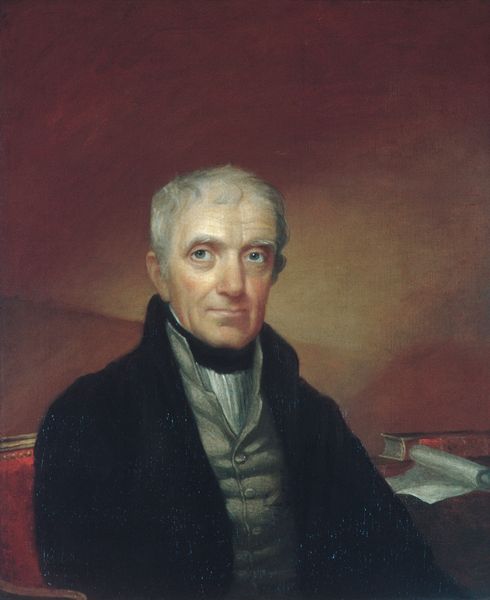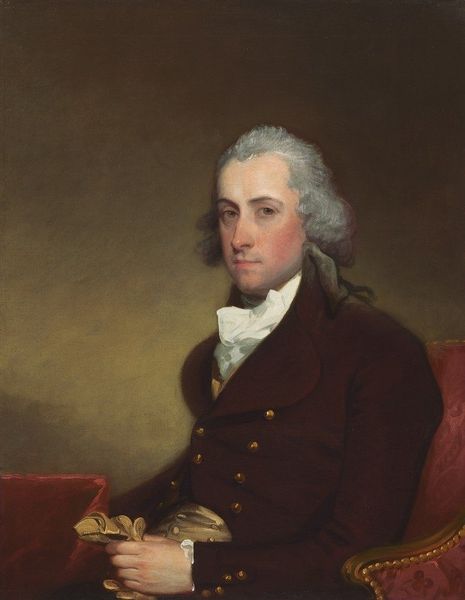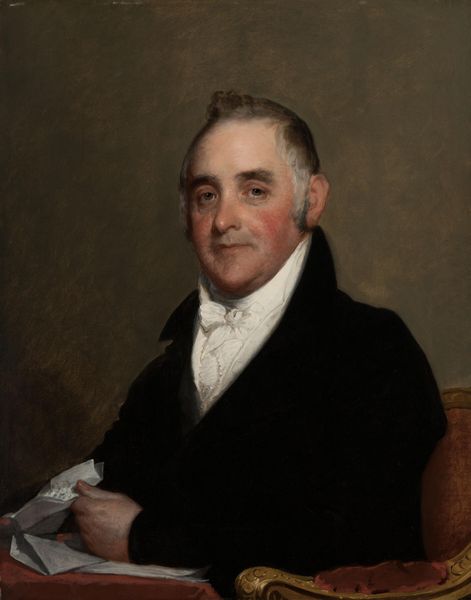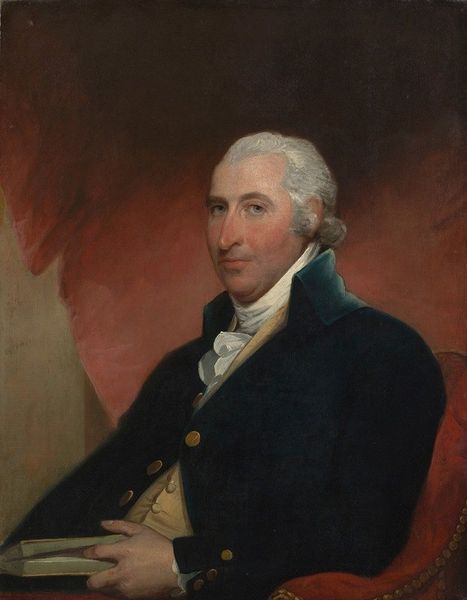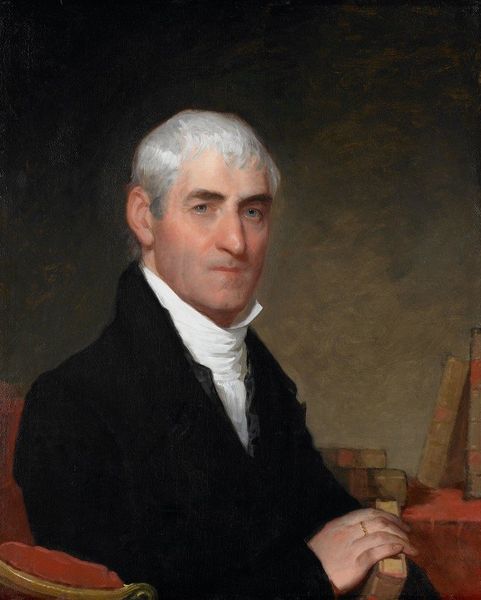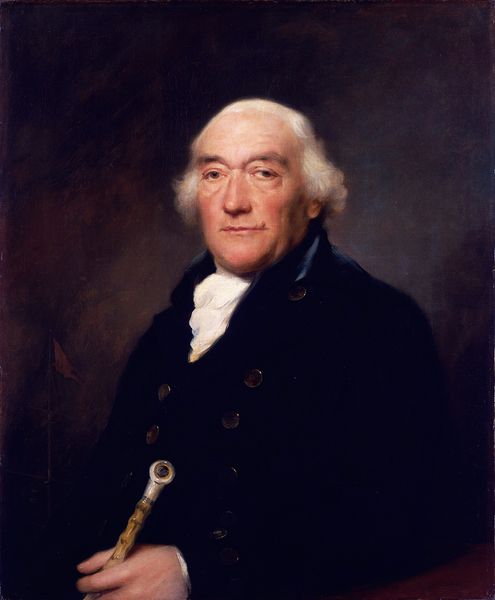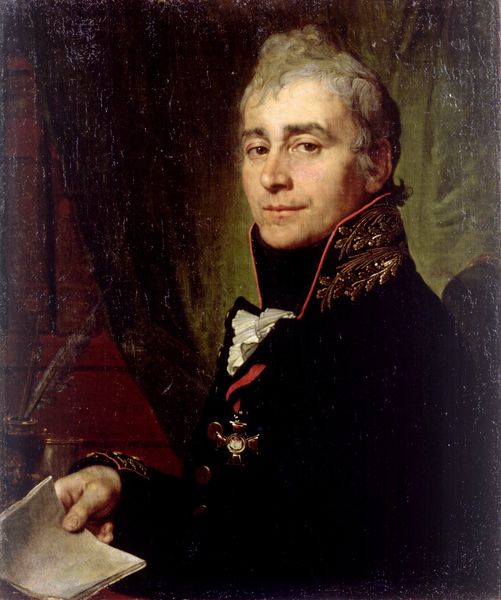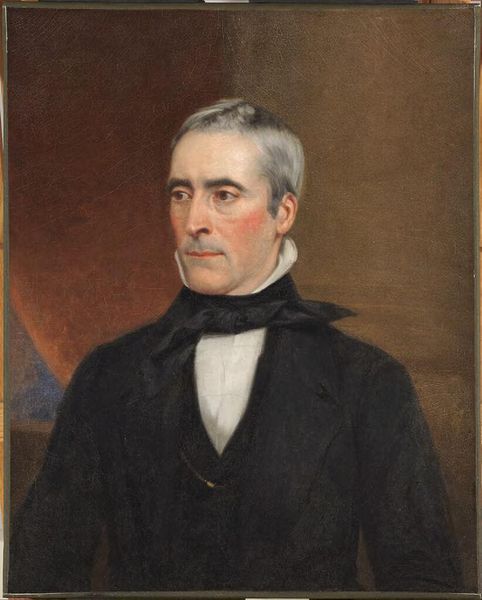
#
portrait image
#
portrait
#
male portrait
#
portrait reference
#
portrait head and shoulder
#
portrait drawing
#
facial portrait
#
portrait art
#
fine art portrait
#
digital portrait
Copyright: Public domain
Joseph Kreutzinger painted this portrait of Ferenc Kazinczy sometime in the late 18th or early 19th century. Kazinczy was a Hungarian author, poet, translator, neologist, and language reformer. Here he is portrayed as a man of letters. This image creates meaning through visual codes that reference the sitter's high social standing, an image that would have been immediately recognizable to his contemporaries. The portrait serves as a record of his accomplishments. Kazinczy lived in an era of significant political and cultural change in Hungary. His literary activity was part of a broader movement of national revival and language reform. The history of the Hungarian language and literature is also the history of the cultural and political institutions that shaped the nation's identity. To understand such an artwork better, a historian might research the specific cultural and political context in which it was made, including the sitter's biography, the artist's career, and the history of portraiture in Hungary. This reminds us that the meaning of art is always contingent on its social and institutional context.
Comments
No comments
Be the first to comment and join the conversation on the ultimate creative platform.
